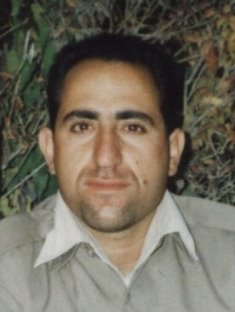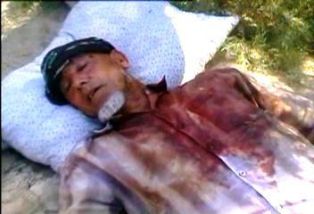
Frida Ghitis
When mass protests erupted in Iran following charges of fraud in last June's presidential election, Western leaders -- particularly U.S. President Barack Obama -- took pains not to taint those domestic disturbances with foreign fingerprints.
To foreigners concerned about Iran's nuclear aspirations, the sight of muscular internal dissent suddenly presented new and intriguing thoughts: International opposition to the Iranian nuclear program is not the only problem faced by the ruling powers in the Islamic Republic. The disturbances revealed one of Iran's great weaknesses: widespread discontent with a regime of questionable legitimacy. Now that the regime has suppressed the protests, however, the problem of internal dissent has not ended. As it turns out, Iran has another Achilles' Heel, one just as debilitating as its political rifts: its deep ethnic divisions, which represent a growing threat to the country's stability and the regime's hold on power.
The Revolutionary Guard has always known about this problem. But the potential destructiveness of ethnic challenges to the rule of Iran's Persian Shiites blasted to the forefront last Sunday, when a suicide bomber detonated himself and his deadly load in the Pishin district, near the border with Pakistan.
The blast killed 42 people, including at least 15 members of the elite Revolutionary Guard, six of them senior commanders. A Sunni group named Jundallah -- soldiers of God -- claimed responsibility, saying the act came as a response to "the constant crime of the regime in Baluchistan." Sistan-Baluchistan is Iran's poorest province, and is home to many of the country's 1.4 million Baluchis, one of Iran's many non-Persian, non-Shiite ethnic minorities.Many people think of Iranians as Persian, but that shorthand is only half right. Persians make up approximately 50 percent of Iran's 70 million people. Fully one-quarter of the population, perhaps more, is ethnic Azeri.
In addition, Iran is home to almost 5 million Kurds, more than a million Turkmen, and a large population of Arabs. And there is disquiet among practically all its minorities.Iranian President Mahmoud Ahmadinejad routinely blames the U.S., Britain, and even Israel for the ethnic unrest. The local population, however, insists their discontent is genuine, fed by frustration and anger at a regime that has not only failed to provide equal opportunities and equal resources to its minorities, but has responded to their complaints with barely restrained brutality.On July 9, 2005, Iranian forces killed a young Kurdish protester in the city of Mahabad.
In the aftermath of the killing, Kurdish protests multiplied throughout the northwestern region of the country, near the border with Iraq, where the Kurds have enjoyed years of relative prosperity and near-complete autonomy. Tehran reacted to the protests with fury. Although the Iranian regime successfully limited the access of outside journalists, a number of accounts emerged about clashes in the city of Saqiz, where government forces reportedly killed at least 12 Kurds and injured more than 70. The show of force only fueled the flames.
After several weeks of unrest, Tehran reportedly sent 100,000 men backed by helicopter gunships to the region. The riots finally ended. The full death toll was never known.Iran's Azeris, the largest minority, also held angry protests earlier this year. In May, a government newspaper published a cartoon in which a boy speaks to a cockroach, and the cockroach answers in the Azeri Turkish language. Iranian Azeris, who have long had a number of emotional grievances against the government, were enraged.
When they started protesting, the government responded with a characteristic show of force. Demonstrations in the Northern cities of Nargadeh and Ardabil, near the border with Azerbajian and Turkmenistan, left four dead and 70 injured.
Baluchi activists have carried out the most violent actions, leaving a trail of death and destruction. Last May, Jundullah took responsibility for a mosque bombing that left 20 dead in the mostly Sunni city of Zahedan in the southeast of the country. A Jundullah attack in March targeted a government motorcade, killing 20.Tehran continuously blames outside forces, usually Washington and London, for instigating the unrest. That's because the alternative is much too troubling.The Islamic Republic, champion of the world's downtrodden Muslims, stands accused of oppressing its own Muslim minorities. That is an image that Iran cannot countenance, because it diminishes the support it enjoys at home and undermines the position it covets as a global example of Muslim governance. There is every reason to expect domestic ethnic unrest -- and its violent suppression -- to intensify in the months to come.
The contested elections eroded the government's legitimacy, adding to the grievances of Iran's minorities. And events in the countries surrounding Iran have added impetus to their protests, with developments in Pakistan, Iraq and Afghanistan feeding the imaginations and the strategic thinking of minority activists. As the West takes on Iran at the negotiating table, neither side will openly acknowledge the rumblings of unrest in Iran. But the sound of a regime facing multiple challenges at home will help shape the ultimate outcome of its confrontation with the West.
Frida Ghitis is an independent commentator on world affairs and a World Politics Review contributing editor. Her weekly column, World Citizen, appears every Thursday.



























































No comments:
Post a Comment